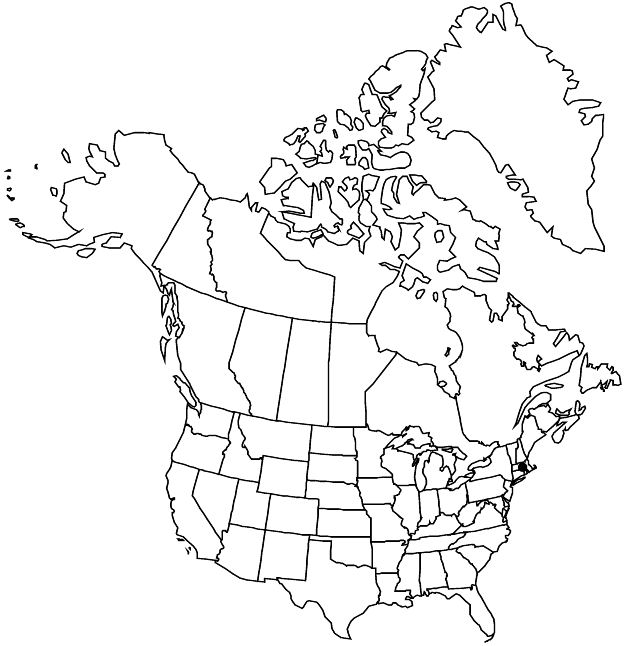Crataegus schizophylla
Bull. Torrey Bot. Club 38: 243. 1911.
Shrubs, 20–40 dm. Stems: twigs: new growth flexuous, glabrous, 1-years old tan, older gray; thorns on twigs ± straight, 1-year old shiny black, 3–5 cm. Leaves: petiole 3–7 mm, length 12–15% blade, glabrous, eglandular; blade yellow-green, shiny, elliptic to narrowly ovate, 2.5–5 cm, coriaceous, base cuneate, lobes 0 or 1–3 per side, margins serrulate, venation craspedodromous, veins 4–6 per side, apex acute to obtuse, surfaces glabrous. Inflorescences 5–20-flowered; branches sparsely hairy; bracteoles not seen. Flowers 12–15 mm diam.; hypanthium glabrous; sepals 3–4 mm, margins ± entire, adaxially glabrous; stamens 10, anthers pink; styles 1–3. Pomes bright red, ± oblong-obovoid, 7–9 mm diam., glabrous; sepals patent-reflexed; pyrenes 1–3.
Phenology: Flowering May–Jun; fruiting Oct.
Habitat: Thickets and banks on sandy soil
Elevation: 10–20 m
Discussion
Of conservation concern.
Crataegus schizophylla is known from Martha’s Vineyard, Duke County. The extension-shoot leaves are larger, relatively wider, with acute lobes. Except for its distinctive leaf form, unique in this series, it closely resembles C. crus-galli.
Selected References
None.
Lower Taxa
"thin" is not a number."glabrous" is not a number."adnate" is not a number."dm" is not declared as a valid unit of measurement for this property.
